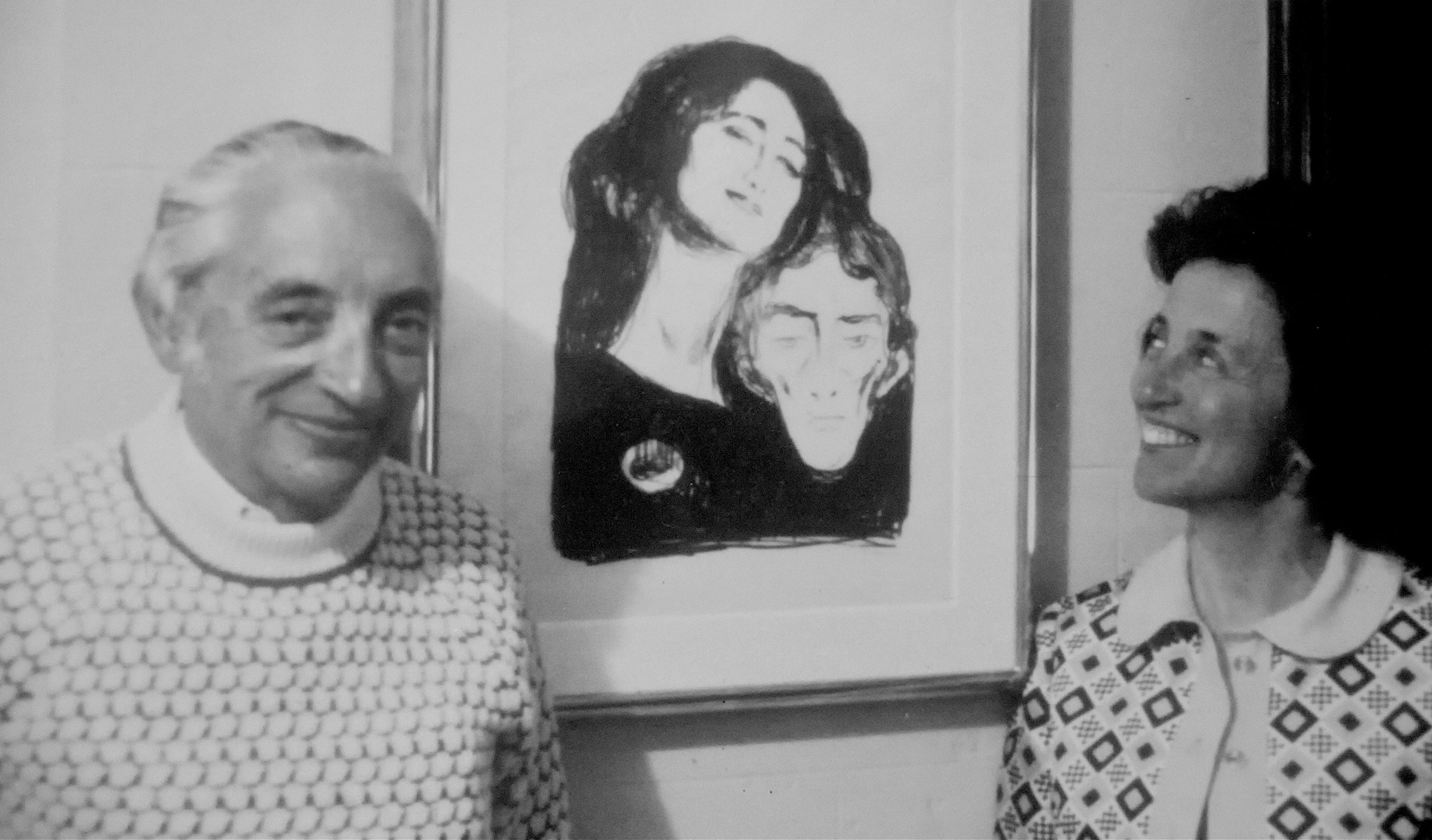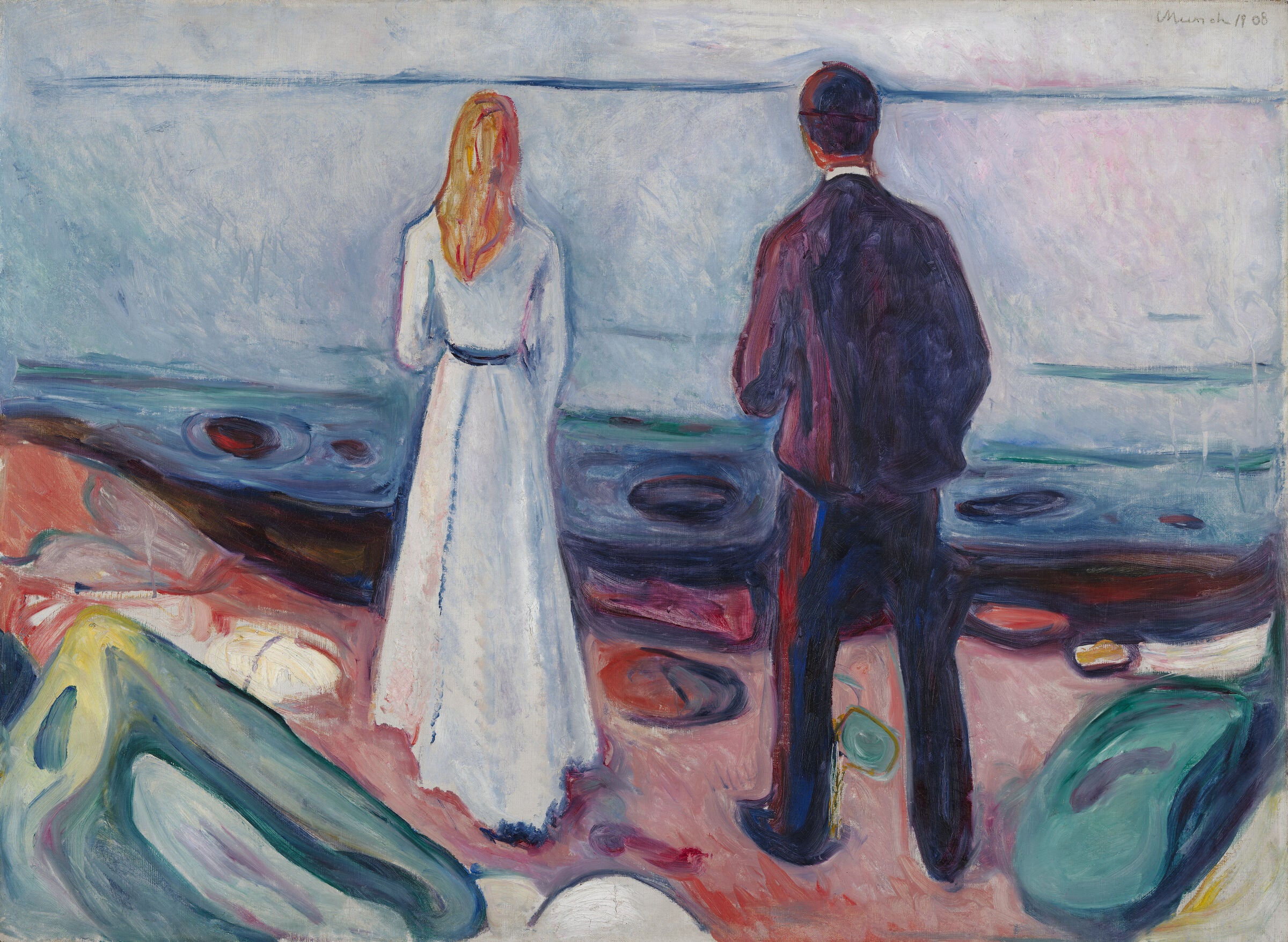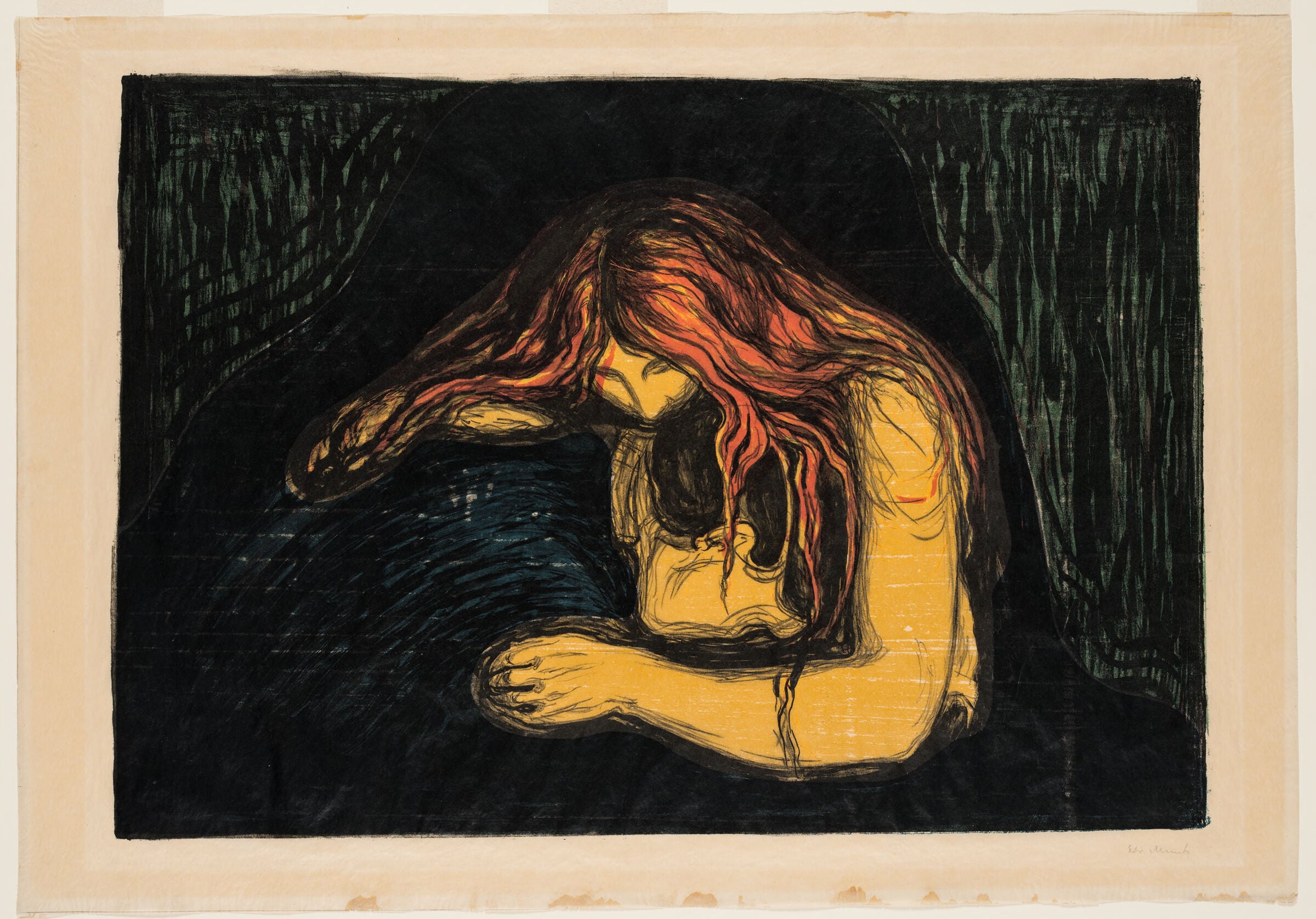Philip A. AB ’37 and Lynn G. Straus’s fascination with the work of Norwegian artist Edvard Munch—best known for his evocative painting The Scream—began with Lynn, who encountered the artist’s work on a bicycle trip through Norway as a teenager. Decades later in 1969, the couple celebrated their 20th wedding anniversary by purchasing their first Edvard Munch print, Salome—setting the course for a lifetime of art collecting as well as giving to the Harvard Art Museums.

“They loved being able to explore Munch’s artistic expression and experimentation in the way that he reworked images,” says son Phil Straus AB ’73 of his late parents. “They were drawn to his technique.”
This interest in how the artist worked inspired the couple to amass one of America’s largest and most significant Munch collections.
As they contemplated the legacy of this collection, the Strauses made the decision to bequeath an extraordinary 62 prints and two paintings by Munch to the Harvard Art Museums—building upon multiple prior gifts for a total of 117 works by the artist altogether.
“One of the major missions of the Harvard Art Museums is education,” says Phil Straus. “My parents’ ideas about how to collect art was closely connected to studying Munch’s technique and perfect for an educational institution.”
This foresight came together powerfully in Edvard Munch: Technically Speaking—an exhibition designed around the Strauses’ collection that ran from March through July—which presented a selection of their gifts from over the years and offered rare insight into the artist’s innovative process by showcasing numerous versions and impressions of recurring themes and motifs across his work. Oslo’s Munch Museum also loaned key pieces for the exhibition, which included an opening lecture, tours, gallery talks, and a film screening.
Among the trove in the couple’s bequest, along with their previous gifts, is one painting and seven prints of Two Human Beings (The Lonely Ones), one of the most famous motifs by the painter and printmaker, who returned to it repeatedly over 40 years. The couple also gifted the dynamic landscape paintings Train Smoke (1910) and Winter in Kragerø (1915); rare examples of the artist’s brief exploration of the mezzotint technique including Young Woman on the Beach (1896); four versions of Vampire II (1895–1902), seven impressions of Madonna (1894–1903); and four different self-portraits, to name a few.


“Munch was a great artist, and one of the ways he can be appreciated is to see the breadth of his work,” says Straus. “This collection is an important contribution to that.”
Among the Harvard Art Museums’ most generous benefactors since the 1980s, the Strauses have given or enabled the museums to purchase works by several other important artists, including Max Beckmann, Georges Braque, Alexander Calder, and Jasper Johns. They also endowed multiple conservation and curatorial staff positions, and in 1994 supported the expansion and renovation of the Straus Center for Conservation and Technical Studies—the oldest fine arts treatment, research, and training facility in the U.S.—which was named for them in recognition of their generosity.
Phil Straus recognizes Munch as an artist who deftly created primal, emotionally charged imagery with precision, practice, and care, and he hopes his parents’ collection will inspire students to cultivate mastery in whatever path they choose to pursue. He’s also happy to see this collection live on in a way that honors both his parents and their longtime partnership with the museums.
“The collection has been given to an institution that understands its importance and is displaying it with the respect and care that the work deserves,” says Straus. “It’s exciting and wonderful to see my parents’ love and appreciation for each other and art exhibited and cared for in a way that is loved and appreciated.”
Learn more about how you can create a legacy at Harvard through a gift of cash, property (including art or real estate), or complex assets in your will or estate plans or during your lifetime from Harvard Gift Planning.